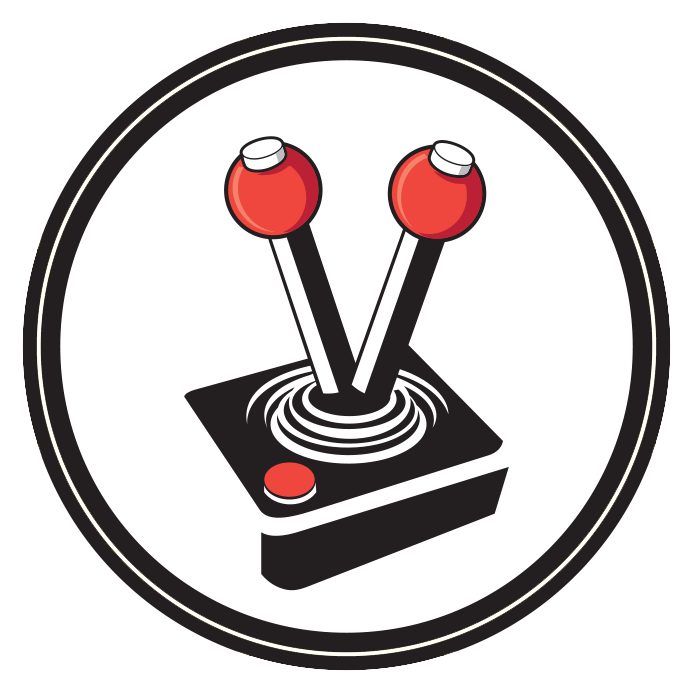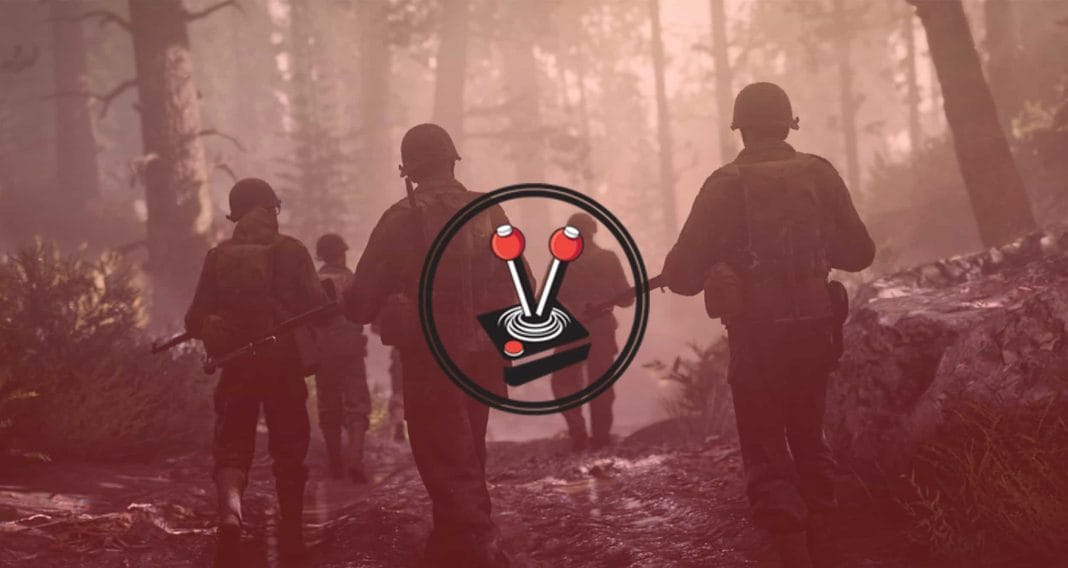When it comes to great looking games about universal strife, the Call of Duty franchise never fails to deliver. Sure, some of the more recent instalments may have seemed a little more far-fetched than normal, and perhaps the multiplayer draw of the newer games has weakened somewhat; but they have all had one great aspect in common: they deliver on story. Every single time. At least in my opinion.
Hence why my curiosity was piqued when Sledgehammer Games and Activision unveiled a new title, complete with story trailer and a hot new catchphrase: “boots on the ground”. At first I was bummed that the series would move away from the futuristic setting of Advanced Warfare. Ridiculous multiplayer mechanics aside, I really liked the futuristic setting in the previous games. I was especially fond of them because of their stories. Although Ghosts was serviceable, I found that the newer games had much better campaigns. Each improving with every new release, right up to Infinite Warfare’s crazy space antics.
With that said, however, I must say that Call of Duty: World War II has an incredible campaign, and it is an amazing game overall. Regardless of my stance on the previous games, this one managed to keep me invested right up to the end. For good reason too.
“Black Hawk, Down” (Single Player)
It is no secret that I prefer the single player component of most games. So I was a little apprehensive when Call of Duty: World War II was announced. This would be the first game in many years that would take the franchise “back to its roots”, so to speak. Possibly with more of a focus on its multiplayer than single player campaign. Thankfully, I could not have been more mistaken.
Allowing the game to take place in World War II means that it cuts away all the unnecessary complications and nuances that the future story lines introduced. The overall experience is far more withdrawn and personable, one that does not take itself as seriously as Advanced Warfare’s plot did. Yet it is still serious enough to stand its ground as a good, well-written story.
You start out as a brand new recruit into the United States Army’s 1st Infantry Division during the first stages of Operation Overlord. Your very first mission as an American soldier is to storm Omaha Beach. This is D-Day, 6 June 1944. All of this, and more, is revealed to you through diary snippets and letters that the protagonist, Private First Class Ronald “Red” Daniels, writes and sends off to his “girl back home”. It is an interesting and captivating narrative element that lends a personable quality to the main character.
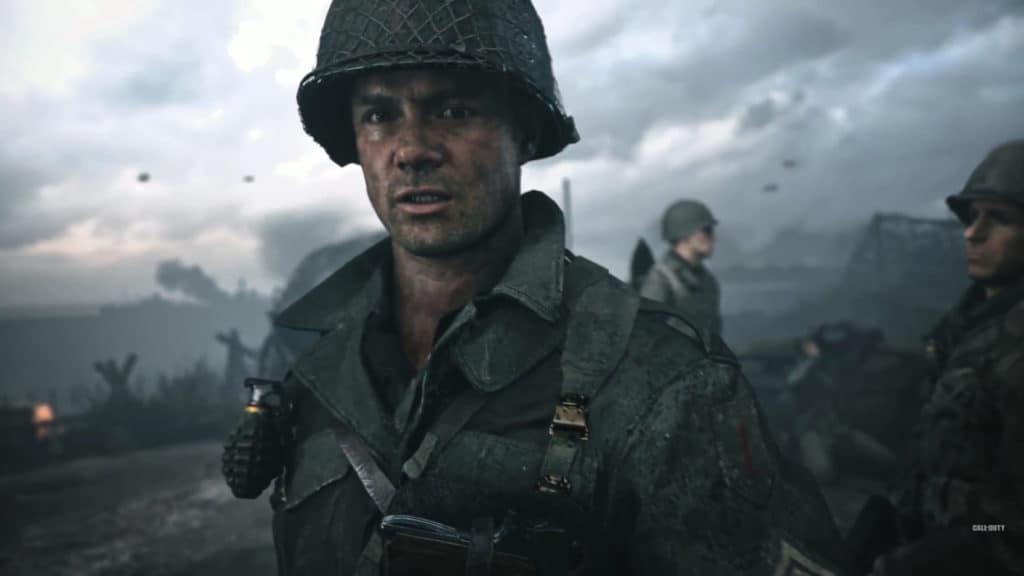
Right from the start, he becomes friends with a few guys. Most notably, PFC Robert Zussman and Technical Sergeant William Pierson. Although you quickly find out that Red and Pierson do not see eye-to-eye. At all. The problem here is that Daniels is just a soldier whilst Pierson is his authority, thus he has no say at all. This conflict between Daniels and Pierson is perhaps the most outstanding part of the campaign. Even then, the rivalry only extends to story bits and narrative requirements.
The campaign’s biggest issue is that it feels uninventive. No matter what you do throughout the loosely based historical story of the Allied push towards the Rhine, there is always a distinct feeling that it has been done before. Many times before, in fact. This feeling persists well over the short six-to-seven hour-long campaign. With that said, the length of the campaign is the game’s biggest strength, one that is saved and strengthened by the relationships between Zussman, Daniels and Pierson. In the end, however, it is all about how the West helped win the war. It takes no chances in storytelling, even from a personal character perspective.
With that said, the campaign does feature very good, well-acted and animated cutscenes. This is where the camera breaks away from Daniels and shows us the everyday life of a grunt. It is also during these scenes that Daniels’ and Pierson’s rivalry shines. The level of detail and emotion simply cannot be acted out in the same way when gameplay ensues.
In terms of gameplay, you can expect the same old song and dance. It is nothing more than what we have come to expect in recent years. In fact, it may be slightly less! As I mentioned above, Call of Duty: World War II is a much more subdued experience. This is most prevalent in parts where you simply have to push forward or drive something. It even has the age-old trope where the hero can instant kill a slew of Nazis with a crappy pistol while he carries a buddy to safety.
The developers liked to advertise the stupid phrase: “boots to the ground”. This became a widely excepted buzzword during marketing, and even extended to other things as the game neared released. The fact of the matter, however, is that World War II really is a “boot to the ground” experience that refuses to jump high enough to skip a stone. It is gritty and far more believable than previous titles. It is also good fun to play, and has a very well written narrative. Yet, there is a distinctly positive feeling the game exudes that I have not felt from a Call of Duty title in years. This, coupled with the great gameplay mechanics mentioned below, makes it all the more worth it.
From stealth to rail-shooting, this game has it all (Gameplay)
With all that said, I must admit: the single-player campaign is pretty dang sweet. Even so, the cherry on the top for the campaign and the other game modes is the fact that self-healing is no more. Yes! Gone is the automatic self-healing magic of past instalments. Rather, you now need to use First Aid Kits to heal yourself. This forces you to dismount from super over-powered turrets and machine guns in favour of survival. It adequately slows down the game a bit, which helps to pace it out nicely.
Pretty early on in the game, you are introduced to the game’s new party mechanic. This allows each party member to give Daniels something after an allotted time has passed, or a certain number of Nazis have been killed. Zussman, for instance, tosses Daniels a First Aid Kit; while Pierson “spots” and reveals all nearby nazis. Better still, squadmates always let you know when their abilities are available. This is great as it takes away the need to constantly stare at the indicators at the bottom of the screen.
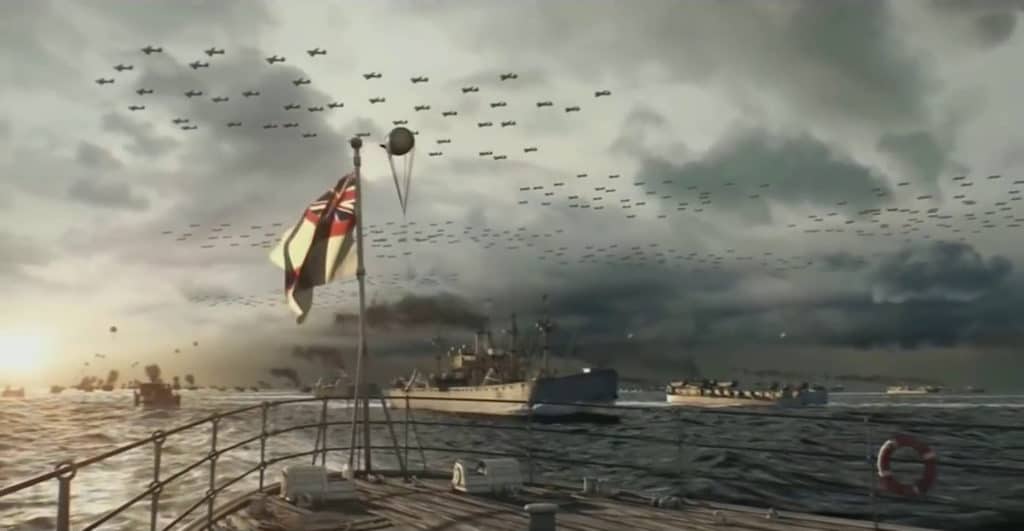
Quick Time Events are also strewn throughout the campaign. They work well and, together with motion blur and other cinematic effects, fit within the story. There may be a few, but they do not feel overused or unnecessary. In fact, they are often used to help ease the pace of the story and, rarely, to advance character development.
I suppose ending this section by mentioning stealth and rail-shooting is trivial, but they are there too. I must say, however, that the stealth sections proved to be quite challenging. They offered some of the most fun I have had in the game (even if I was not very good at them). Right after, I would say, Act 1, you take on the role of a French agent who infiltrates a German office. Here, stealth is necessary mostly because the story relies on it, but also because if you do break cover, all hell breaks loose and surviving becomes very difficult. Sadly, this part is cut short as soon as you find your mark, but similar parts crop up throughout the game at later stages.
Rail shooting is a first-person shooter trope by now, and of course, you can expect it to be in Call of Duty: World War II. Fortunately, the sequences that feature it make sense and do not feel forced.
All in all, the game features fun and enjoyable gameplay, and I have not even touched upon the multiplayer components yet!
Hey, look at the loot box I just bought (Multiplayer)
If there is one thing I do not like to delve into, it is the politics of loot boxes and gambling within games. Simply put, I am of the opinion that you either waste money being happy or are happy not wasting money. I do not care for, nor do I ever have a need to buy, loot boxes. My point, however, is that Call of Duty: World War II now features a brand-new multiplayer lobby. One where you can watch other players open their loot boxes. Do it enough and you get an achievement! Yay?! At least the micro-transactions are cosmetic only in nature.
Moving swiftly along, I would like to reiterate that I do not play multiplayer games often. In fact, I would choose not to, if given the choice. With that said, I must admit that the hours I spent in multiplayer were well worth the effort. It was fun, exhilarating, and quite entertaining.
Matches are quick and action-packed. You need fast reflexes (which I lack) or you will die quickly (which I did, a lot). While the game went back to its roots in terms of story and gameplay, it really did not go anywhere in terms of multiplayer. It did, however, introduce a new classes feature called “Divisions”. Given the context of the game, all Divisions, weapons and weapon upgrades are period-appropriate. This is perhaps my favourite aspect of the multiplayer. No more stupidly annoying neon backpacks and rocket-boosting enemies!
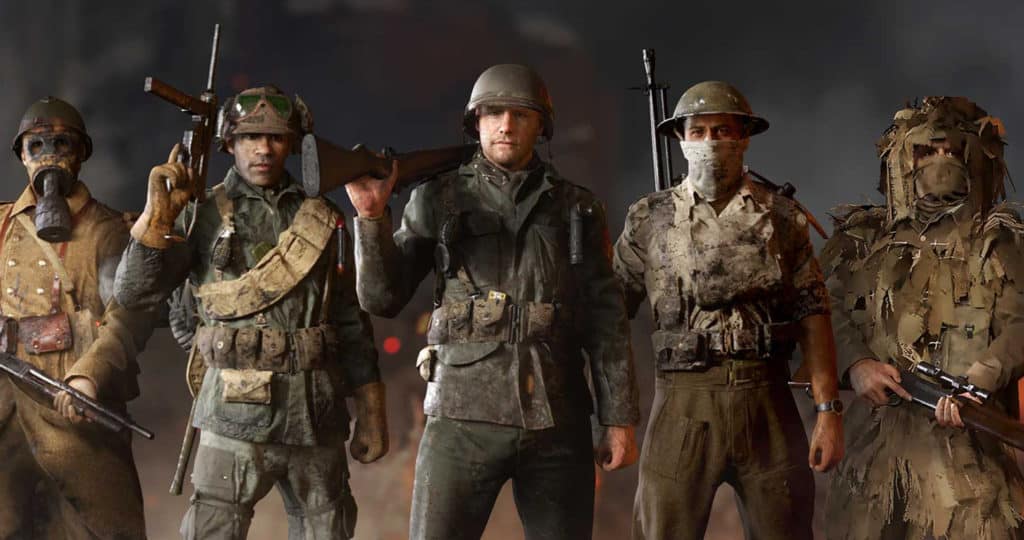
As for which modes are available, you can be rest assured that series veterans will still have their fun here. Returning game modes include Team Deathmatch, Domination, and Kill Confirmed. With that said, war is something totally different to what we have ever seen before in a Call of Duty game. Matches take place on huge maps where teams have to complete objectives to win. A good example of this was when I lost my patience trying to build a bridge. The opposing team kept firing at us from vantage points and lobbing grenades at us from afar. Even so, I had a lot fun.
Similarly, I had good fun in the game’s Nazi Zombie co-op mode as well. While I admittedly played a lot less of this game mode than I did of the normal multiplayer modes, I did like how much it still felt like Zombies from previous games. Just like previous games, you once again take on the role of a well-known, old celebrity. It is then your duty to fight through hordes of zombies while you complete a number of set objectives. This, of course, is all set to a gloomy and dark backdrop. It is most definitely a stark contrast to the neon and 80s inspired aesthetic of Infinite Warfare’s zombie mode.
Even loading has had an overhaul (Performance)
Call of Duty: World War II performed extremely well. The game had a rock-solid frame rate all the way through, and I did not notice any major framerate drops. I believe that the game runs at a smooth 60-frame lock, by using dynamic scaling where needed. This technique certainly paid off, as the game felt buttery smooth.
Loading was a similar experience. It only took long between missions, and even then it did not feel that invasive. I suppose the narrative voice overs by Daniels helps pass the time quite well.
Once in mission, there was no loading at all. I like to think that the loading is done during quick time events, or during “defend the area” sequences. Whatever the case may be, however, it works. I remember how when playing Advanced Warfare, I would often be met with short loading bumps during every mission interval or scene split. This was not the case in Call of Duty: World War II.
A similar, yet different kind of adventure (Conclusion)
It is no secret that Call of Duty: World War II is the best game in the franchise in years. It has an intriguing, captivating single-player story that tugs at the heart-strings. The game also includes a thorough multiplayer aspect with various and enjoyable game modes. The game adequately takes the franchise back to a much less science-fiction setting, and, for lack of a better phrase, is certainly a more “boots on the ground” experience.
I do, however, feel like Sledgehammer Games could have taken more risks with the single-player campaign. With that said, I do think that it served as a good story about camaraderie and respect. It highlights the horrors of war in a much more brutal way than I would ever have imagined for a Call of Duty game. Thus effectively openning one’s eyes to the brutality of war, rather than glamorising it.
Multiplayer has always been a strong component in Call of Duty games. Thankfully, WWII is no different. In fact, it is mostly the same, save for a new multiplayer lobby and game mode changes. I do like that the Nazi Zombie mode has gone back to its roots (as opposed to the EDM-inspired zombies in Infinite Warfare and Alien creatures in Black Ops 3).
Overall, Call of Duty: World War II delivers a fun and exciting experience, no matter what game mode you are playing, and it serves as a decent step in the right direction for both Sledgehammer Games and Activision. I would personally not mind going back to space and seeing a follow-up to Infinite Warfare, but who am I to judge when a game is as good as this.
| Platform | Xbox One |
| Difficulty | Regular |
| Time Played | 10 Hours |
| Acquisition | Copy Courtesy of Megarom Interactive |
Junior Editor at Vamers. From Superman to Ironman; Bill Rizer to Sam Fisher and everything in-between, Edward loves it all. He is a Bachelor of Arts student and English Major specialising in Language and Literature. He is an avid writer and casual social networker with a flare for all things tech related.
